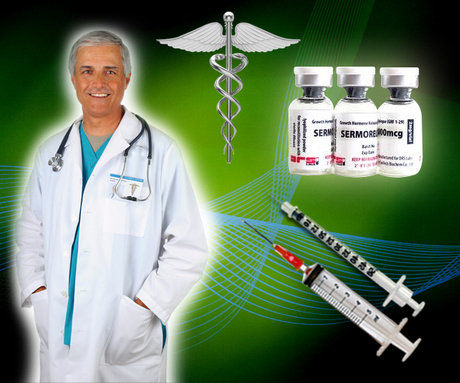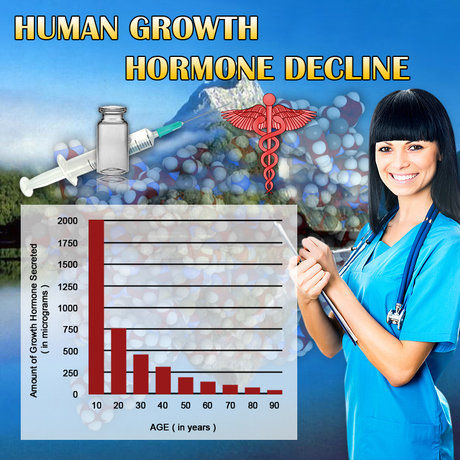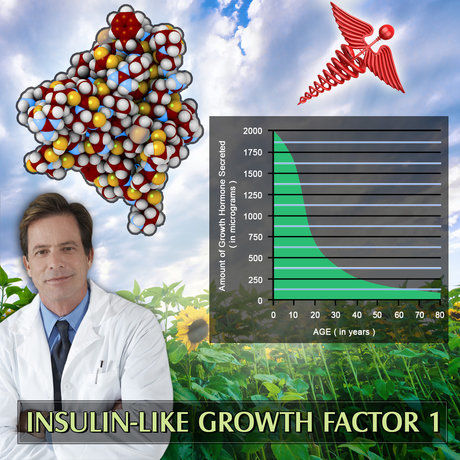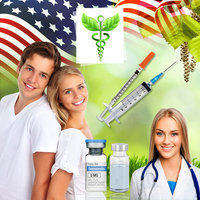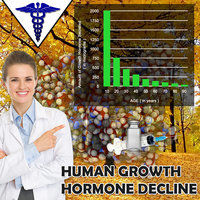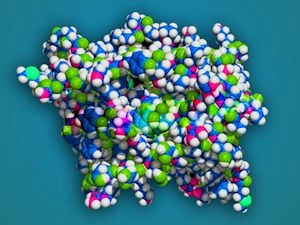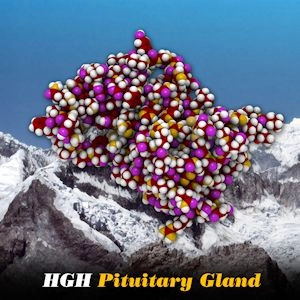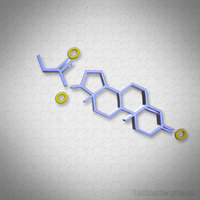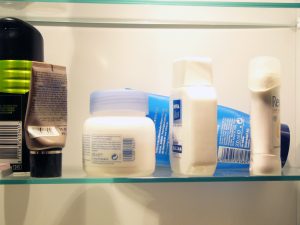 Phthalates are ester compounds used to change the characteristics of plastic products and products containing plastic.
Phthalates are ester compounds used to change the characteristics of plastic products and products containing plastic.
Depending on the type and concentration of Phthalates in the product, it alters the malleability and strength of the product.
Phthalates are in a wide variety of products. In addition to being “plasticizers” that impact the structure of plastics, they also act as lubricants in skin products like make-up.
Phthalates are incredibly useful and good at what they do. The problem is that they can be very bad for you. Phthalates belong to a class of chemicals known as Endocrine Disrupting Chemicals.
These are chemicals that have the ability to alter the way that your body produces or utilizes various hormones, like Testosterone, Estrogen, and Human Growth Hormone.
In particular, many Phthalates have the ability to reduce the ability of Testosterone to function in the body, leading to reduced Testosterone Levels and increased Estrogen dominance.
Phthalates have been correlated with postnatal issues related to Testosterone inhibition, and in high enough concentrations, they can lead to birth defects (though these concentrations are very high).
In adults and adolescent males, Phthalates have been clinically shown to reduce Testosterone Levels and sperm health in direct correlation to their concentrations in the bloodstream.
What Are Some Examples of Phthalates?
There are a number of forms of Phthalates. Some of the most common Phthalates are BBzP, DEHP, DEP, and DBP:
BBzP – This chemical is used in many products, from artificial leather to road cones, to PVC pipes. This product is associated with an increased risk of eczema in children whose mothers were exposed to high levels of the chemical.
DEHP – This is the most commonly used form of Phthalate, and is used primarily as a plasticizing agent.
This chemical is widely used in medical tubing devices such as air tubes, dialysis bags, and catheters. It is also used in many food packages, although it is regulated that DEHP can only be used in packaging for products that are water-based.
Cheeses and other fats are particularly vulnerable to DEHP because fat can draw the chemical into the food product under certain circumstances.
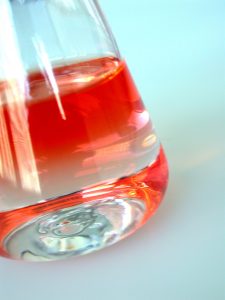 DEP – Whereas most common Phthalates are solid at room temperature, DEP is actually a liquid at room temperature, and this can be transmitted much more easily.
DEP – Whereas most common Phthalates are solid at room temperature, DEP is actually a liquid at room temperature, and this can be transmitted much more easily.
DEP is popularly used in fragrances and cosmetics, to help the products stick to the skin more easily.
They are often used as ingredients in pill coatings.
There is evidence that high exposure to these chemicals can have adverse effects for people that work with them in high doses on a regular basis, but this form of Phthalate appears to have a low risk of toxicity, although more research is needed.
DBP – This form of Phthalate, like DEHP, is often used as a plasticizer, but its characteristics also make it well suited for printing ink and adhesive products. It is also often used as an ingredient in solvents that are designed to kill germs.
This product was recently used in products such as kids' toys and nail polish but has been banned in the United States for this purpose due to concerns regarding the products Endocrine Disrupting characteristics.
How Are Phthalates Commonly Used?
If you have any knowledge regarding Phthalates, then you likely known that they are frequently used in drink and food containers, but they are in a lot of other products that you may use every day. Each year, there are about one billion pounds of this chemical manufactured around the globe on an annual basis.
This means that, although it can be incredibly beneficial to your health to limit your exposure to Phthalates, there really is no way to cut off your exposure completely. In fact, 95% of Americans are exposed to levels of Phthalate high enough to be detected in a urine sample.
Here is a list of products that commonly contain Phthalate compounds:
Medical Products, including IV bags and plastic medical tubing
Car Interior, including the gearshift, dashboard, and steering wheel
Children's Toys
Raincoats
Shower Curtains
Wire Coating
Vinyl
Carpet
Pesticides and Repellents
Nail Polish
Most Products with Artificial Fragrances
Deodorant
Hair Spray
Perfume
Makeup
Phthalates in the Environment
 We are not only exposed to Phthalates through man-made products but also through the water that we drink and the food that we eat.
We are not only exposed to Phthalates through man-made products but also through the water that we drink and the food that we eat.
Dairy products are frequently laced with Phthalate products for example.
Phthalates are drawn to fat and do not react directly with water, and cheeses and meats often contain measurable levels of Phthalates.
Your tap water can even be tainted with Phthalates, resulting from exposure to agricultural runoff and industrial byproducts that may not be completely filtered out during the purification process.
Also, since pesticides usually contain these Endocrine Disrupting Chemicals, your vegetables and fruits are also exposed to these chemicals, unless they come from sources that explicitly do not use these products.
How Can Phthalates Effect My Health?
So, we basically live, eat, and breathe Phthalates, at least to a certain extent. We take them in through the skin, through the air we breathe, and through the products, we eat and drink. After they are absorbed, they pass directly into our bloodstream.
There are some groups that claim that Phthalates are perfectly safe, but most of these groups are industry lobbyist groups, including the American Chemistry Council. In spite of the reassurances of these industry groups, there is a long history of research that says that many Phthalates are powerful Endocrine Disruptors.
From the 1940s, we've had evidence that Phthalates have the capacity to inhibit hormone balance, specifically with regard to the body's use of Testosterone.
This can affect both sexes significantly but obviously has a greater impact on men and boys.
Fetuses exposed to high levels of Phthalates prenatally are actually more likely to experience issues such as partially descended testicles or slightly under-developed sexual organs. Exposure during adolescence and adulthood reduces Testosterone Levels in the bloodstream, which increases the risk of Low-T and the various conditions from hypertension to heart disease that are associated with the condition.
What Are Hormones and What Do They Do?
Hormones are chemicals that are produced by the human body that keep our systems functioning in sync. Hormones help organs throughout the body know what the others are up to and encourage certain processes based upon the needs of the body.
 As anyone who has ever met a teenager knows, hormones affect emotion and psychology as well as physical and physiological processes. The brain is the primary control center for hormone production and balance, although many hormones are produced by other parts of the body.
As anyone who has ever met a teenager knows, hormones affect emotion and psychology as well as physical and physiological processes. The brain is the primary control center for hormone production and balance, although many hormones are produced by other parts of the body.
All of the glands that produce hormones are collectively referred to as the endocrine system, and any outside influence that alters the natural function of these hormones are known as Endocrine Disrupting Chemicals.
Phthalates almost universally belong to this class of compounds, because, when introduced to the human body in sufficient quantity, they block or copy the normal function of hormones present within the body and disrupt hormone balance, which leads to a variety of negative effects, dependent upon the specific chemical at play.
Examples of the Endocrine Disrupting Capabilities of Phthalates
A study in 2007 discovered that adult male patients with elevated Phthalate Levels were more likely to show signs of Insulin Resistance and Obesity.
A study in 2009 conducted in Taiwan showed that Elevated Phthalate Levels were associated with early puberty and breast growth in girls.
Women that work in an atmosphere with high levels of ambient Phthalates during pregnancy have up to triple the average risk of having a child with hypospadias, a urethral birth defect.
Boys that experience elevated levels of specific Phthalates prenatally show statistically significantly less masculine characteristics during childhood, as measured by their predisposition to play fighting and playing with toys gender-associated with boys, such as trucks.
Another Taiwanese study, conducted in 2009, showed that Phthalate exposure can alter normal sexual development in the womb.
What Plastic Products do Not Contain Phthalates?
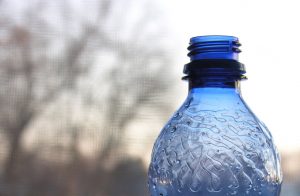 Although Phthalates are present in many soft plastic products, they are not ubiquitous.
Although Phthalates are present in many soft plastic products, they are not ubiquitous.
For example, most food containers, water containers, and plastic wraps do not contain Phthalates.
On the other hand, some of these products do contain chemicals that are closely related to Phthalates, which may also be problematic under certain circumstances or at certain concentrations of exposure.
For this reason, if you are interested in limiting your exposure to Phthalates, you may wish to avoid plastics as much as possible.
Seven Way to Limit Phthalate Exposure
1. Be conscientious when buying perfumes and any products with fragrance. This can be difficult because Phthalates are rarely listed directly on the list of ingredients. Instead, you'll likely see a blanket term such as Parfum or Fragrance. If you see these terms in the ingredients, this almost universally means that Phthalates are an ingredient in the product.
What To Look For—Products with labels such as Phthalate Free, or labels that reassure that they do not contain synthetic ingredients, or that they only use essential oils for fragrance.
2. Did you know that the recycling code on the side of plastic containers refers to the ingredients used in the production of that product? Codes 1, 2, and 5 mean that the product does not contain Phthalates. 3 and 7 indicate that the product likely has Phthalates or Bisphenol-A, another potent Endocrine Disrupting Chemical which impacts Testosterone-Estrogen Balance.
3. If you have children, be wary of old toys made of plastic. Your stuffed animals and other non-plastic products will be just fine, but laws banning the use of Pthalates in children's products were only enacted in 2009, so many old toys made of soft plastic contain these Phthalates. Hard plastic toys like Legos and Transformers should be just fine, but soft-plastic products should be discarded.
4. Limit your use of plastic of any kind. Some exposure to plastics is inevitable, but the less that you interact with plastic products, especially those associated with food and drink, the more that you expose yourself to Pthalates. It's important to never cook your food in a plastic container because the elevated temperatures speed up the leaching process.
If you must use plastics, opt for plastics that you know to be free of Phthalates, even if they contain Bisphenol-A. If you need a good, tough container for food or drink, use products made of glass, silicone, or stainless steel.
 5. Go organic! In the past, this wasn't as useful of an option, as there were few regulations regarding what amounts to organic food, but today, there are trustworthy organizations that provide their seal of approval to true organic products.
5. Go organic! In the past, this wasn't as useful of an option, as there were few regulations regarding what amounts to organic food, but today, there are trustworthy organizations that provide their seal of approval to true organic products.
Organic-certified fruits, vegetables, and meats are not allowed to use pesticides or treated sewage as fertilizer.
Because so many of the Phthalates we are exposed to from day to day come to us through our diet, it is significantly important to choose foods wisely if you are looking to limit your consumption of Phthalates.
6. Buy a water filter! Many water pipes contain Phthalate, most commonly DEHP. Appropriate carbon filters have the ability to draw DEHP out of your drinking water, protecting you from Phthalates.
There is some evidence that the filtration of DEHP might not be perfect, but it is still highly effective. If you are willing to make the investment, nano-filtration is a superior option.
7. Do your research and vote with your wallet. There are many companies that make a concerted effort not to use Phthalates. There are also companies that have bypassed these chemicals from the start!
Although there is no way to protect yourself entirely from Phthalates and other similar Endocrine Disrupting Chemicals, you can take steps to limit your exposure.
The body can handle a certain concentration of these chemicals without any significant issues, so if you distance yourself from these chemicals when possible, you can keep their influence in a more acceptable range.
Contact Us For A Fast And Professional Response

- Testosterone Therapy and the Heart. Is It Worth the Risk? [Last Updated On: October 5th, 2024] [Originally Added On: March 5th, 2021]
- 13 Natural Ways to Increase Longevity and Quality of Life [Last Updated On: January 14th, 2025] [Originally Added On: April 26th, 2021]
- Perimenopause is a Real Thing – and Women are Trying to Bring More Attention to It [Last Updated On: January 6th, 2025] [Originally Added On: May 18th, 2021]
- Hormone Imbalance a Major Factor in “Brain Fog” Symptoms [Last Updated On: January 8th, 2025] [Originally Added On: May 24th, 2021]
- Chronic Stress is a Major Factor in Causing Hair Loss [Last Updated On: January 14th, 2025] [Originally Added On: June 15th, 2021]
- Can Drinking Alcohol Affect My Hormone Levels? Part 1 [Last Updated On: January 10th, 2025] [Originally Added On: July 28th, 2021]
- Ask the Experts: How Do I Live Longer? [Last Updated On: March 4th, 2025] [Originally Added On: September 21st, 2021]
- Crazy-Making Hormone Problems [Last Updated On: January 12th, 2025] [Originally Added On: October 5th, 2021]
- Why Does the Middle East Have the Lowest Cancer Rates Across the Globe? [Last Updated On: January 23rd, 2025] [Originally Added On: January 31st, 2022]
- More Muscle = Better Cancer Fighter [Last Updated On: January 22nd, 2025] [Originally Added On: March 15th, 2022]
- A Tale of Two Friends -- Hormone Deficiency Testimonials [Last Updated On: January 19th, 2025] [Originally Added On: March 30th, 2022]
- Poor Sleep Wrecks Your Hormones and Your Libido [Last Updated On: January 3rd, 2025] [Originally Added On: July 1st, 2022]
- Suppressing Hormones Can Improve Success Rate of Melanoma Treatment [Last Updated On: January 26th, 2025] [Originally Added On: August 7th, 2022]
- Blue Zones - Cultures of Longevity [Last Updated On: November 20th, 2024] [Originally Added On: November 23rd, 2022]
- Toe-Tapping Time [Last Updated On: February 3rd, 2025] [Originally Added On: November 30th, 2022]
- The Hormones That Affect Your Weight [Last Updated On: December 25th, 2024] [Originally Added On: December 12th, 2022]
- How Long Until HGH Benefits Kick In? [Last Updated On: February 26th, 2025] [Originally Added On: June 10th, 2023]
- Understanding the Timeline of HGH Benefits [Last Updated On: February 17th, 2025] [Originally Added On: February 17th, 2025]
- The Quest for a Longer Life: An Overview [Last Updated On: February 19th, 2025] [Originally Added On: February 19th, 2025]
